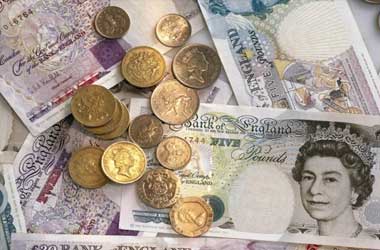 The Canadian dollar rallied Wednesday and while doing so pushed the GBP/CAD pair downwards from their weekly high after the BoC (Bank fo Canada) revealed its decision to maintain interest rate at a record low level of 0.25%, while slashing the quantum of bonds purchased under its quantitative easing program.
The Canadian dollar rallied Wednesday and while doing so pushed the GBP/CAD pair downwards from their weekly high after the BoC (Bank fo Canada) revealed its decision to maintain interest rate at a record low level of 0.25%, while slashing the quantum of bonds purchased under its quantitative easing program.
The central bank also announced that a hike in the benchmark interest rate would happen by the middle of 2022. Ironically, the Loonie was not performing well since the beginning of this week until the release of BoC’s monetary policy statement.
The BoC explained that the decision to reduce bond purchases, which was started to counter the effect of Covid-19 effect on the economy, reflects a lower degree of emergency.
In its policy statement, the bank said “This adjustment to the amount of incremental stimulus being added each week reflects the progress made in the economic recovery.”
The above statement was an extra signal that the country’s economy may be resilient enough to reach the most sought after 2% inflation in the medium-term, implying that the Bank of Canada would look at the prospects of implementing a rate hike next year.
As the Covid-19 linked issues fade away, the bank expects inflation to return to 2% without any let over in the second half of next year. The Loonie rallied after the monetary policy statement and decisions, recording sharp increase in the exchange rate of USD/CAD pair.
The Bank of Canada will purchase C$3 billion worth government bonds per week, a drop from C$4 billion for the past five months, after the second cut to the total quantity of bond purchases since October 2020.
Obviously, this means that the Bank of Canada will still be providing support to the economy by means of fresh stimulus, although at a lower rate that will have minimum positive effects on the bond yields and also the investor sentiment on the Canadian dollar.
In recent times, the country’s economic data has been robust than anticipated by the markets or the Bank of Canada, lifting Canada to the numero uno position in the list of developed economies and making the huge bond purchase program seem irrelevant.
Before announcing an upward revision of GDP growth forecasts, the Bank of Canada stated:
“Growth in the first quarter appears considerably stronger than the Bank’s January forecast, as households and companies adapted to the second wave and associated restrictions.”
Similar to many developed countries, the Canadian economy has demonstrated its resilience to revived prohibitions in several areas such as Ontario, the largest Canadian province where over one-third of Canadians live. Robust Canadian enterprises and households have initially paved way for the Bank of Canada to minimize the rate at which it adds fresh stimulus into the economy, even though technical issues are also responsible for such a decision.
The technical problems are the outcome of vigorous policy changes of central banks to the pandemic and related prohibitions that caused a close down of the global economy in 2020.
In case, there were no changes in the bond purchases, as per the earlier QE program, the Bank of Canada will own about 50% of the government bonds by the end of this year. That would have a negative impact on the manner in which the market has been operating.
The Bank of Canada stressed Wednesday that it will maintain the benchmark interest rate until the inflation target is sustainably attained, implying that investors who were looking forward to see an increase in cash rate before the second half of 2022 will be displeased.
For the most part of March and April, the Canadian dollar has been the top performer. However, it had slipped to the third position yesterday, with the pound and Norwegian Krone taking the top two places in performance.
Avery Shenfeld, chief economist at CIBC Capital Markets, opined that the Canadian dollar may start with a slightly bullish in the second half of next year, considering the rate hike into guidance. However, the analyst also anticipates the positive effect on the Loonie to be mitigated by the Fed’s rate hike in 2022.




